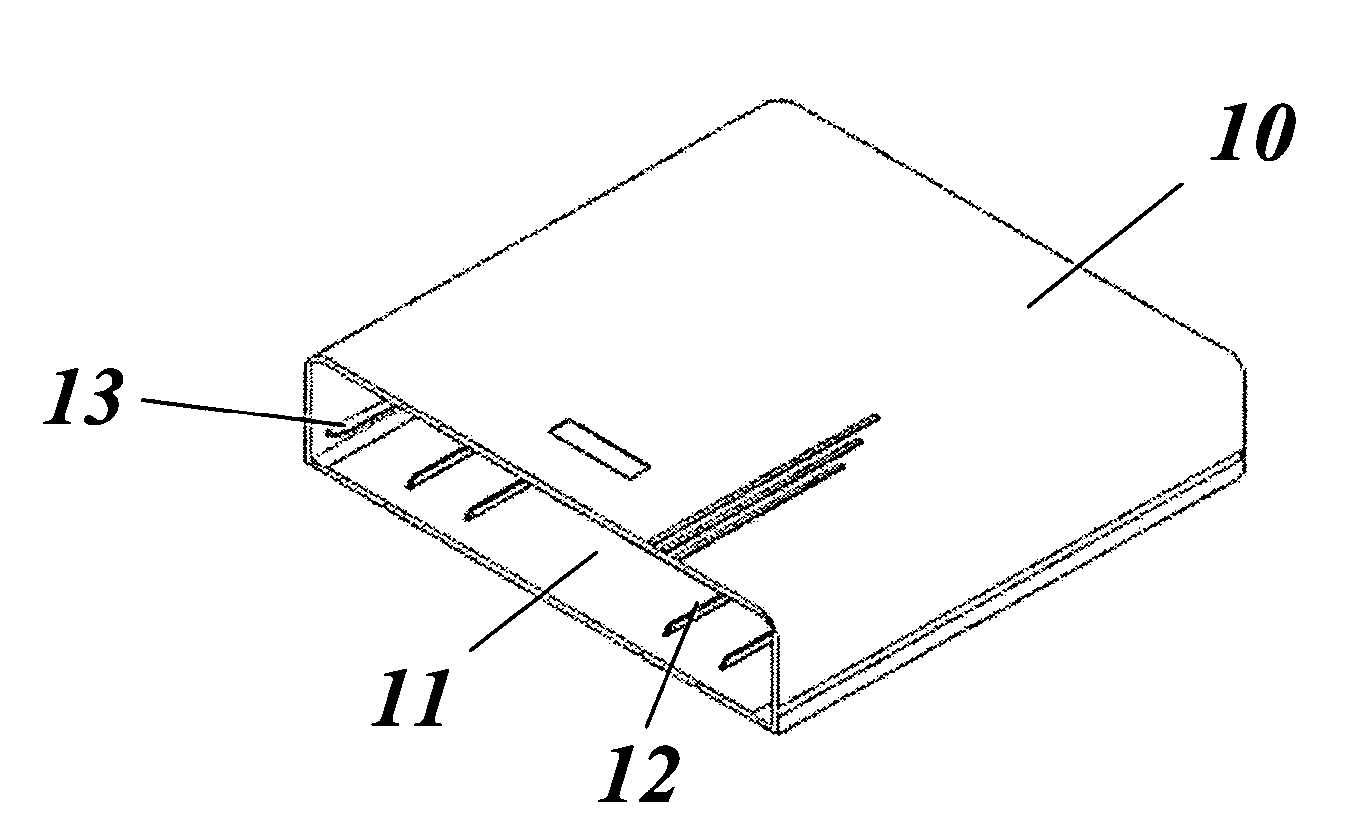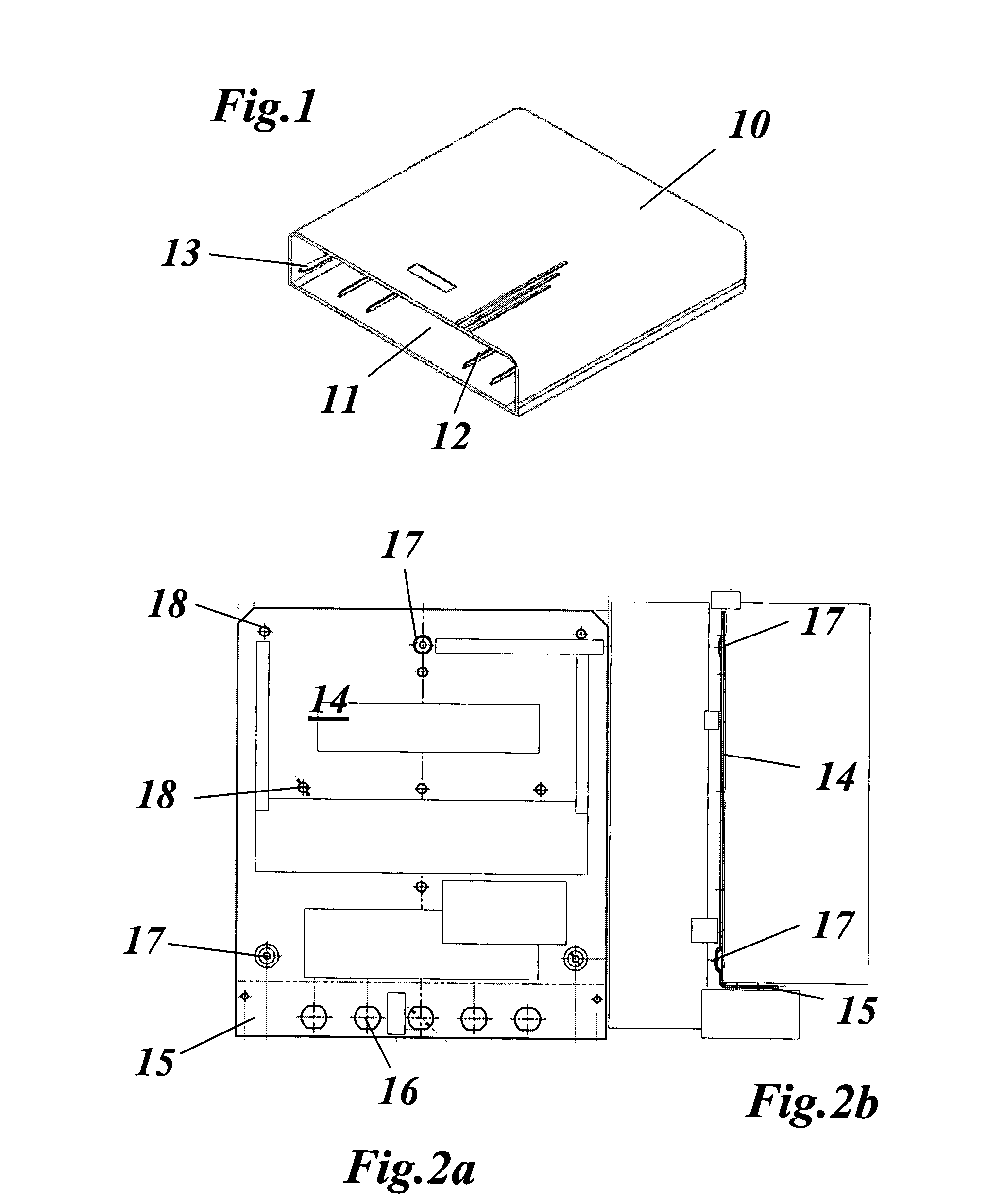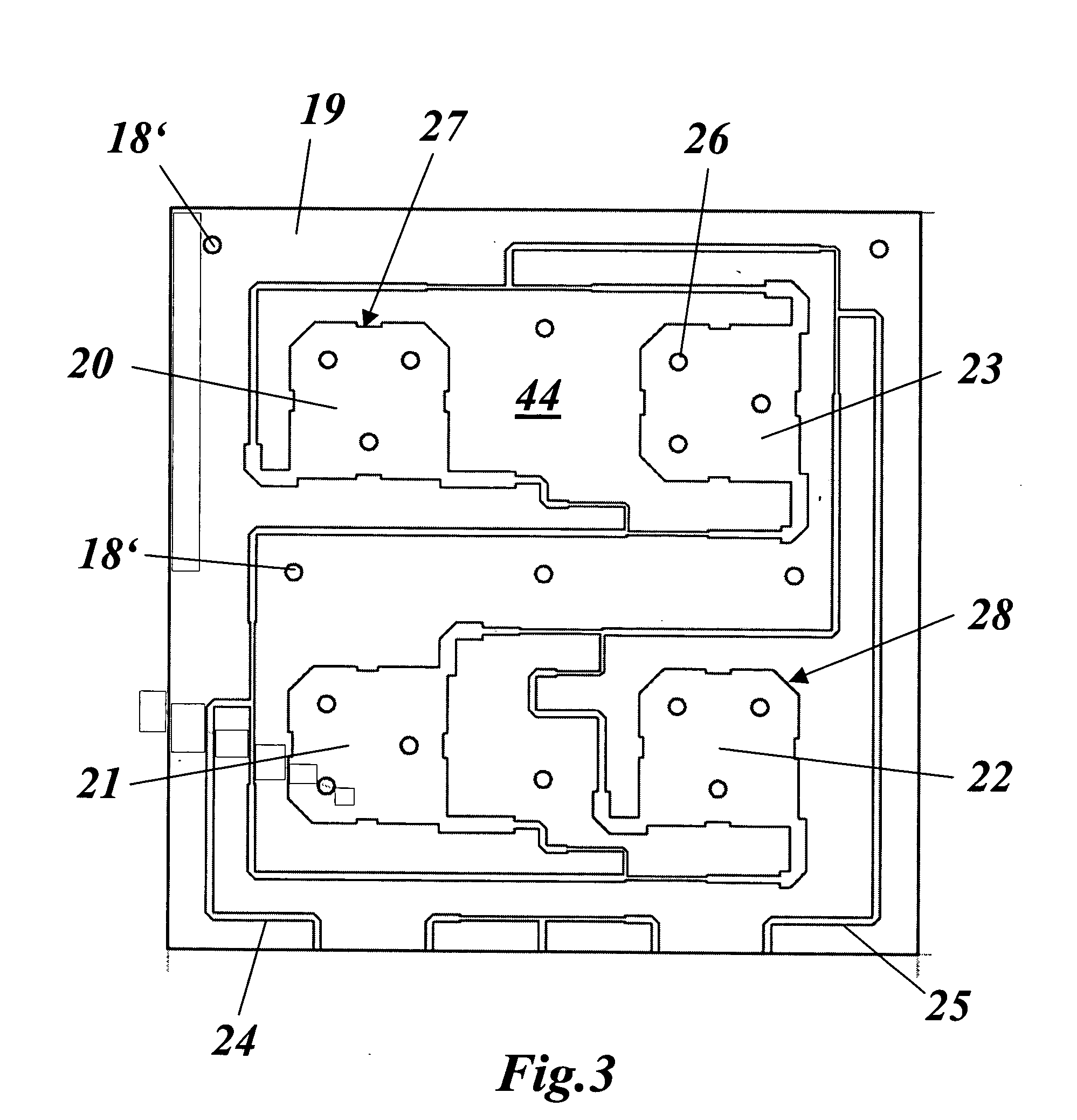Dual-polarized microstrip patch antenna
- Summary
- Abstract
- Description
- Claims
- Application Information
AI Technical Summary
Benefits of technology
Problems solved by technology
Method used
Image
Examples
Embodiment Construction
[0024]FIG. 8 shows a perspective illustration of a highly simplified form of a microstrip patch antenna according to one embodiment of the present invention. The antenna 43 essentially comprises a metal sheet 14 and four individual antenna elements EE1-EE4 which are mounted on the metal sheet 14 in a square shaped pattern and at a distance above the upper face of the metal sheet. The shroud 10 of the microstrip patch antenna 43, which is illustrated in FIG. 1, has been omitted in FIG. 8 for clarity. The individual elements EE1-EE4 are composed of a common printed circuit board (PCB) 19, PCB surface mounted patches 20-23 and a feed network 44, and at least one upper patch 29 arranged at a distance above the printed circuit board 19. The upper patch / patches 29 govern increases in the bandwidth.
[0025]FIG. 3 depicts one embodiment of printed circuit board 19 in which a feed network 44 is formed on the upper face of printed circuit board 19. The lower face of printed circuit board 19 is...
PUM
 Login to view more
Login to view more Abstract
Description
Claims
Application Information
 Login to view more
Login to view more - R&D Engineer
- R&D Manager
- IP Professional
- Industry Leading Data Capabilities
- Powerful AI technology
- Patent DNA Extraction
Browse by: Latest US Patents, China's latest patents, Technical Efficacy Thesaurus, Application Domain, Technology Topic.
© 2024 PatSnap. All rights reserved.Legal|Privacy policy|Modern Slavery Act Transparency Statement|Sitemap



